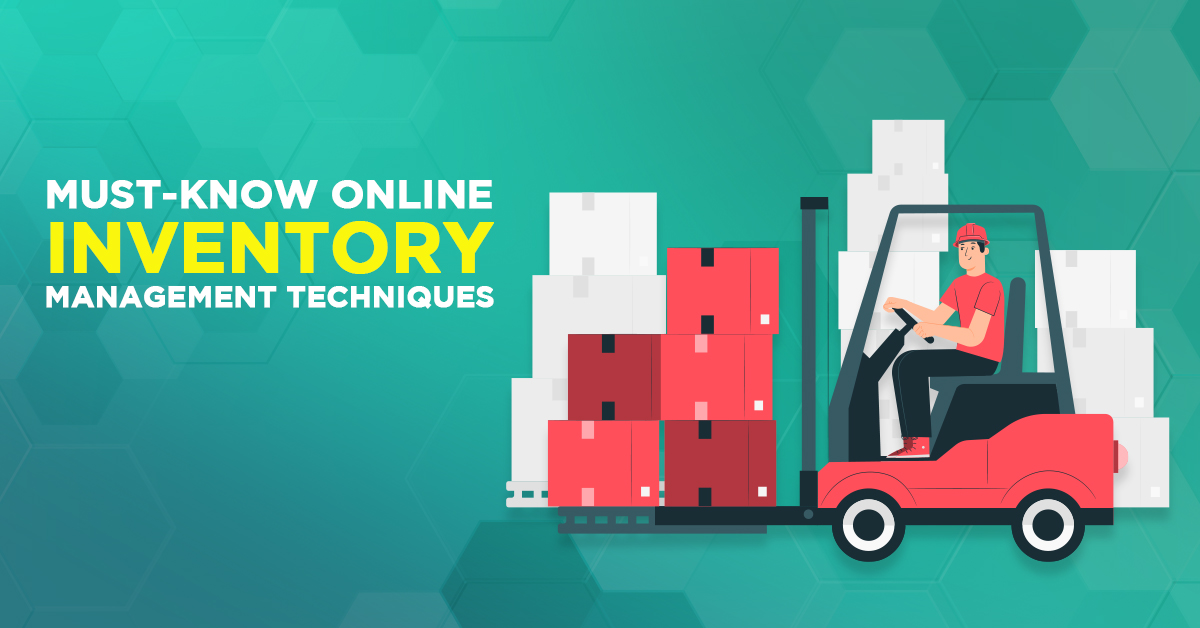
Online inventory management is the process of monitoring your company’s stocked goods and products through digital solutions. You can quickly identify your products’ specifications, their current location, and their availability through this. With online inventory management, you can strategically determine when to restock materials and resources, thereby reducing the cost spent on overstocking. For these reasons, businesses use online inventory management systems to make their work automated and more streamlined. In this article, let us talk about the inventory management techniques that you should know when running your business.

Top 10 Inventory Management Techniques
With effective online inventory management, you are assured that you have enough stock on hand to address your customers’ needs. It also helps you save money by avoiding unnecessary spoilage due to the expiration of goods. You can also avoid having dead stocks, or those goods that go out of style or season, or have altogether become irrelevant. Also, effectively managed inventory helps you save on storage costs.
Here are ten must-know inventory management techniques you can implement in your business:
Set Par Levels
Par levels mean the minimum number of products that you should always have on hand. By setting par levels for each of your products, you can know when you are almost out of stock, signifying that you will have to order more again. Par levels differ for each product, and it relies on how fast they sell and how quick they are to restock. As such, setting a par level requires research. You can adjust your par level depending on the season or the market trend.
First In, First Out
When we talk about first-in, first-out (FIFO), it means that your oldest stock (first in) has to be sold first (first out). FIFO is most applicable for perishable products such as meats, fruits and vegetables, flowers, and the like. Abiding by this inventory management technique will prevent unnecessary spoilage of goods. However, you can also use FIFO for non-perishables. You don’t want to be left with obsolete stocks with old designs and features that you may find difficult to sell in the future.
Foster Supplier Relationships
One of the inventory management techniques you always need to remember is managing your relationships with your suppliers properly. They will want to work and keep working with you better if you have a strong relationship with them. As a result, you will find it easier to quickly restock your goods when selling fast or return items that are not selling that well. With a well-established relationship with your supplier, you get better chances with negotiation, especially pricing.
Craft a Contingency Plan
Issues and concerns will always surface when you are running a business. As such, as one of the inventory management techniques that you need to know, it is vital that you craft a contingency plan for when these problems arise. Determine your business strengths, weaknesses, opportunities, and threats (SWOT) before crafting your contingency plan. Then, detail in the plan how your business will react and the necessary steps to follow to resolve the crisis.
Regular Checking
You also need to check the number of products you have in stock regularly. For this, you can make use of software such as the FIFO online inventory management system. You can also perform a physical inventory to check all of your inventory at once during year’s end. Another option is spot-checking, where you choose a product, count it, and compare it with its expected number in stock. Lastly, you can perform cycle counting, where you check different products daily, weekly, or monthly in a rotating schedule over the year.
ABC Analysis Report
Your products will drive various amounts of revenue, some more than others. Thus, with the use of an ABC analysis report, you can grade the value of your stock according to a percentage of your revenue. For instance, A is the % of stock representing 80% of your revenue, B is the % of stock representing 15% of your revenue, and C is the % of stock representing 5% of your revenue. Therefore, your A stock is your most profitable product, which you should always have on hand to not miss on future sales. On the other hand, your C stock includes your slow-moving or dead stock that you can consider selling at a discount.
Forecasting Customer Demand
Predicting demand is one of the inventory management techniques you need to know and apply to your business. For this technique, you need to check on a few variables relevant to the market, including market trends, sales from last year (same week), current year’s growth rate, guaranteed sales from contracts and subscriptions, economy and seasonality, promotions, and future ad spend.
Last In, First Out
Essentially, last-in, first-out (LIFO) is the opposite of FIFO. LIFO is an inventory management technique that assumes that the goods you purchased most recently (last in) are also sold first (first out). LIFO works under the assumption that prices are steadily increasing. Therefore, we can say that the most recently acquired inventory would also cost the highest. Then, the higher the cost, the lower its profits—and thereby a lower taxable income.
Safety Stock
Basically, safety stocks are those products that you set aside in case of emergency. These stocks will act as a threshold for when your supply chain is disrupted or when your goods are damaged. Safety stock also helps you stay prepared for other unforeseen circumstances regarding your goods or product availability. The formula to determine safety stock is as follows: (Maximum Daily Usage x Maximum Lead Time) – (Average Daily Usage x Average Lead Time).
Reorder Point
Another signifier that can inform you that it is already time to restock is the reorder point. You can determine the reorder point using the following formula: Lead Time Demand + Safety Stock. Identifying the reorder point for each of your products may be quite a time-consuming activity. However, with the help of an online inventory management system, you can finish it with no sweat.

Apply Inventory Management Techniques for Improved Businesses
Today, many industries benefit from online inventory management systems. With an effective inventory management system, they can monitor and analyze their inventory and sales pattern. With this, they reduce costs and keep their business profitable.
Supplementing Inventory Management Techniques with Management Systems
Thus, it is vital that you also use these inventory management techniques to ensure that you properly manage your products and goods for your business. You can do this with the help of an online inventory management system to monitor your stocks and give you insights on how everything works with regards to your inventory!
